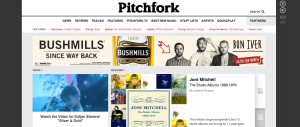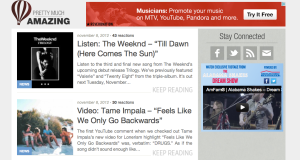 The social media world is a world of it’s own, made up of large social continents like Facebook, Twitter, YouTube, and countless other networks. Through social media, the world is globally connected, because of this, businesses have discovered a whole new playing-ground. Their objective is to reach their target audience through social media platforms, to influence them by using clever branding and marketing skills, and finally, to make a profit.
The social media world is a world of it’s own, made up of large social continents like Facebook, Twitter, YouTube, and countless other networks. Through social media, the world is globally connected, because of this, businesses have discovered a whole new playing-ground. Their objective is to reach their target audience through social media platforms, to influence them by using clever branding and marketing skills, and finally, to make a profit.
There are three important components when it comes to social media and consumerism. One should understand the significance of successful branding, the importance of both large and small influencers, and what it means to be a human observer.
Charlie White, the author from the online article Branding: How It Works in the Social Media Age, claims branding and social media go together like peanut butter and jelly, saying, “social media can serve as a gigantic megaphone” for one’s brand. Successful branding occurs when consumers connect a specific idea or image with one’s business or a particular product or service. Branding through social media allows companies to build their reputation beyond the actual product, all online. A Top 10 Brands list from a site called TopTenz claims that some of the best branded companies are Coca-Cola®, Disney, Whole Foods Market ®, Nintendo®, BMW, Starbucks®, Target®, Nike, Apple, and Google™. What do you think?
 I’ve always known how important influencers are for a business. Recently though, I have learned that in the age of social media, the definition is slowly changing as to how one would define the term “influencers”. This is because of the opportunity all social media users now have, the ability to be an individual leader within their area(s) of interest and the opportunity to be heard. Because all individuals have the opportunity to be heard, they all have the opportunity to be influential too. I found an article titled, “Five Types of Social Media Influencers” from the website Social Media Today and the author, Raymond Morin, claims that there are actually five types of social media influencers out there. Here’s an overview:
I’ve always known how important influencers are for a business. Recently though, I have learned that in the age of social media, the definition is slowly changing as to how one would define the term “influencers”. This is because of the opportunity all social media users now have, the ability to be an individual leader within their area(s) of interest and the opportunity to be heard. Because all individuals have the opportunity to be heard, they all have the opportunity to be influential too. I found an article titled, “Five Types of Social Media Influencers” from the website Social Media Today and the author, Raymond Morin, claims that there are actually five types of social media influencers out there. Here’s an overview:
- The Networker (Social Butterfly): pretty self explanatory. “The Networker” has the largest contact list and is found on all social media platforms.
- The Opinion Leader (Thought Leader): high credibility within his/her field or area of interest. He/she could become the best ambassador of a brand.
- The Discoverer (Trendsetter): he/she is always the first to use a new platform. Always up to date with new trends.
- The Sharer (Reporter): he/she distributes information to the bloggers/journalists. Amplifies messages.
- The User (Everyday Costumer): he/she represents the regular customer. “The User” does not have a network as large as “The Networker”, but his/her network is just as important.
It’s important for one to be aware of the different types of influencers. Which influencer(s) does one’s business want to reach?
 So, what does it mean to be a “human observer” within the social media world? It’s important for the average human observer to be aware of how the media can skew our behavior, interests, and beliefs. This concept is sometimes called “media awareness” or “media literacy”; Stephanie Cole writes about it in her article, “Becoming Media Aware: The First Step To Change“. As observers, we need to understand that there is such a thing called a “mindless consumer”. We need to think critically about the messages the media is trying to promote, especially in the social media world.
So, what does it mean to be a “human observer” within the social media world? It’s important for the average human observer to be aware of how the media can skew our behavior, interests, and beliefs. This concept is sometimes called “media awareness” or “media literacy”; Stephanie Cole writes about it in her article, “Becoming Media Aware: The First Step To Change“. As observers, we need to understand that there is such a thing called a “mindless consumer”. We need to think critically about the messages the media is trying to promote, especially in the social media world.




